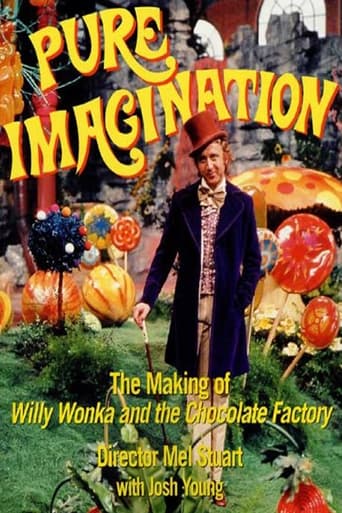Nonureva
Really Surprised!
Cleveronix
A different way of telling a story
Kaydan Christian
A terrific literary drama and character piece that shows how the process of creating art can be seen differently by those doing it and those looking at it from the outside.
Zlatica
One of the worst ways to make a cult movie is to set out to make a cult movie.
He_who_lurks
From what I understand, this is not the only Sandow film out there. Edison made several films on this strong guy, but I've only seen the one included on "The Great Train Robbery and other Primary Works" disc. And apparently that one is the first.Originally entitled "Souvenir Strip of the Edison Kinetoscope" I'm guessing Edison and Co thought this would be their only film about Sandow. So when they made others they changed its name to "Sandow No. 1". About 20 seconds long (the version on the DVD I own is that long because it was under-cranked a tiny bit) this short features Sandow showing off his muscles. That is all. While it might've (hey, I made a joke, ha ha) been nice for him to actually perform a stunt or two, what's here isn't all that bad and while it might (there I go again) be only mildly impressive it is history. And, considering the Edison film strips were only about that long at the time, you can't really blame them.Worth seeing, but more for the fact it's a piece of history than for entertainment. Too bad Sandow isn't still alive, I could've learned something from him...
Snow Leopard
The historical background to this Edison Company footage of strongman Eugen Sandow is much more interesting than the movie itself. In its day, it was a triumph of opportunistic self-promotion, both by the subject and by the film studio, and it became the first of many Edison features to showcase the era's entertainment celebrities.Sandow was renowned for his formidable physical strength, but unfortunately he does not perform any feats here that might provide evidence of it. Instead, he spends his screen time flexing his muscles and assuming a variety of positions that highlight them. To be honest, it's rather boring, but that is admittedly a matter of personal taste, and many of its viewers probably enjoyed it for its own sake.According to film historian Charles Musser, Sandow waived his appearance fee in return for the chance to shake hands publicly with Edison, which provided lavish press coverage that helped both of them to share in one another's celebrity. They each certainly understood what they were doing, and thus this short feature is quite interesting as a demonstration that the commercial aspects of the movies have been part of the field right from the beginning.
Brandt Sponseller
This is a 20-second long Edison Company short, filmed March 6, 1894 at Edison's Black Maria studio, of the man widely considered to be the first modern body builder, Eugen (or "Eugene") Sandow, who flexes for the camera.Sandow, born Friedrich Wilhelm Mueller in 1867 in Prussia, had worked as a sideshow strongman, often for famed showman Florenz Ziegfeld. In later years he was the personal fitness instructor for King George V. He authored a number of books on health and fitness and is credited with doing much to start the "health movement" that continues to this day.Sandow was notable for believing that strongmen shouldn't just present displays of strength, but show off their bodies as works of art. Conceiving of his body as sculptural artwork, Sandow looked to classical Greek and Roman statuary for an ideal human form to emulate.Ziegfeld put together a traveling show called "Sandow's Trocadero Vaudevilles"--"Trocadero" after the Chicago nightclub Ziegfeld's father opened in 1893, hoping to capitalize on the city's upcoming World's Fair. In the roadshow, as in appearances at the Trocadero, Sandow presented "Muscle Display Performances", as he does in this short. He also performed the usual feats of strength, although he would occasionally execute odd stunts such as holding a pony above his head.An amusing incident on the roadshow occurred in San Francisco, where it was publicized that Sandow would wrestle a "man-eating lion". Thousands showed up, but it was obvious that the animal had been drugged--it could barely function. Despite such fiascos, Ziegfeld and Sandow traveled for nearly two years.So Sandow, the short--the copyright title is actually "Souvenir strip of the Edison Kinetoscope (Sandow, the modern Hercules)"--has much historical significance. As a work of art, it isn't quite as successful as some other Edison shorts, such as Annabelle Serpentine Dance (1894). The picture is broached by light seeping in from either side, probably due to some technical problem with the early cameras. Less forgivable, the framing of Sandow is too close, resulting in poses being cut off; you can often not see Sandow's hands, and it somewhat ruins the statue-like effect that was the point of Sandow's performance.But Sandow is impressive enough physically, and in light of the historical interest, both because of its place in the history of film and Sandow and Ziegfeld's lives, it's certainly worth the few seconds it takes to watch.
James M. Haugh
Strongman Eugene Sandow made his motion picture debut in this film. The Edison organization - probably in the person of W.K.L. Dickson himself since he uses a quote from a book he wrote with his sister - was so proud of this fact that they printed up a Souvenir strip showing 12 stills from the movie and with the following description:"Observe that each picture has a slight change of position as it passes the point of vision. The rapid photographing of these different stages of movement at the rate of 46 to 50 a second or 2760 upon a long strip of light sensitive film creates the illusionary spectacle of moveable figures." From "The Life and Inventions of Edison - by Antonia and W.K.L. Dickson.

